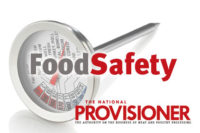Close the Food-Safety Gap With Traceability
Animal identification and traceability are critically important issues facing producers today. Moreover, the financial impact on the beef industry following the first American case of BSE (bovine spongiform encephalopathy) in December 2003 has been catastrophic, costing $5 million for the initial response and an 80-percent loss of foreign beef trade.
Since 2002, detections of bovine tuberculosis in six states have required the destruction of more than 25,000 cattle, reports Bruce Knight, Under Secretary for Marketing and Regulatory Programs, in a CattleNetwork interview.
The industry needs to be able to track cattle from birth to finished product to control risks associated with the deadly disease. That was made perfectly clear in the ensuing scramble to trace when and where a single cow in Washington state contracted mad cow disease and, moreover, where the meat was sold.
Thankfully, there is no lack of support for an animal identification system.
John Clifford, Animal and Plant Health Inspection Service (APHIS) deputy administrator for veterinary services, views traceability as the key component to animal-disease protection.
“If you can’t locate [diseased] animals, what assurance can you give to other states, or to your trading partners that you can quickly locate and eradicate the diseases you find?,” he questioned in his remarks at the 2007 National Institute of Animal Agriculture expo. “That’s a problem, and it will continue to be a problem until all producers grasp this issue and take it on.”
I shudder to think what might have happened if the Washington state outbreak had affected cows in multiple herds rather than a single herd as was the case. As it was, it took APHIS workers nearly a year to complete their investigation to identify the herd in question.
There is more than one reason for a universal traceability system. A pork-industry executive provides additional justification for this critical tool to arm participants in the global marketing of meat and poultry products. When an animal with part of a hypodermic needle imbedded in its flesh arrived for slaughter, there was no way to determine its origination. It was one hog in a day’s shipment, none of which arrived with a birth certificate or documentation to find its owner. I wanted details. How could this happen?
The answer, of course, is that there is no mandatory preventative system in place. There is, however, a voluntary government program underway through USDA’s National Animal Identification System (NAIS), instituted in 2002 as animal identification primarily to help eradicate such diseases as brucellosis and bovine tuberculosis. The early system is insufficient due to ineffective information systems and official identification capability.
NAIS is the modern version designed to complement existing identification programs with a rapid-disease-outbreak-investigative component enabling teams to move across state lines if necessary to trace a suspect animal to its source. The ultimate goal is a 48-hour timetable.
It is not a question of whether it should happen, but rather when will it happen?
With the news that South Korea intends to introduce a nation-wide cattle and beef tracking system starting late next year to expand the limited tracking program in the country in place since 2004, the time is ripe for a global initiative.
This year’s foot-and-mouth (FMD) disease outbreak in the United Kingdom provides additional justification for a global system. The UK, which had experienced a devastating FMD outbreak in 2001, delivered daily reports to its U.S. trading partner. This time, officials there were able to quickly reassure European trading partners that the situation was under control, and have been able to resume trade.
Experts emphasize that its trading partners will expect the same kind of response from the U.S. animal protein industry.
America is not likely to have a system in place next year given the pace of NAIS registrations – some 423,000 premises owners to date. This is not to suggest the start of a race to see who gets there first. It would be beneficial to all, however, to take the turtles out of the process and introduce a few hares. The goal on both the public and private fronts should be about recognizing and supporting the use of tools that build a better food-safety system. Players on the field must be fit for battle in a highly competitive arena.
Check out www.usda.gov/nais for more information and/or to register a premise.



Report Abusive Comment